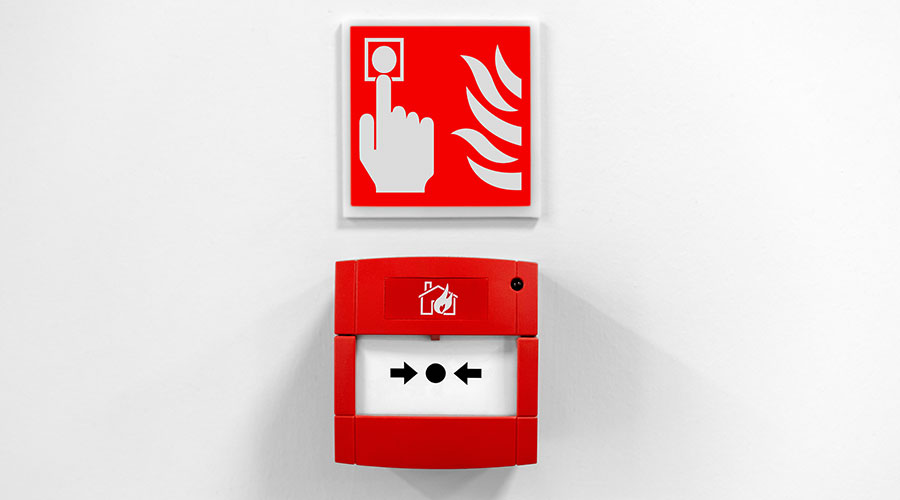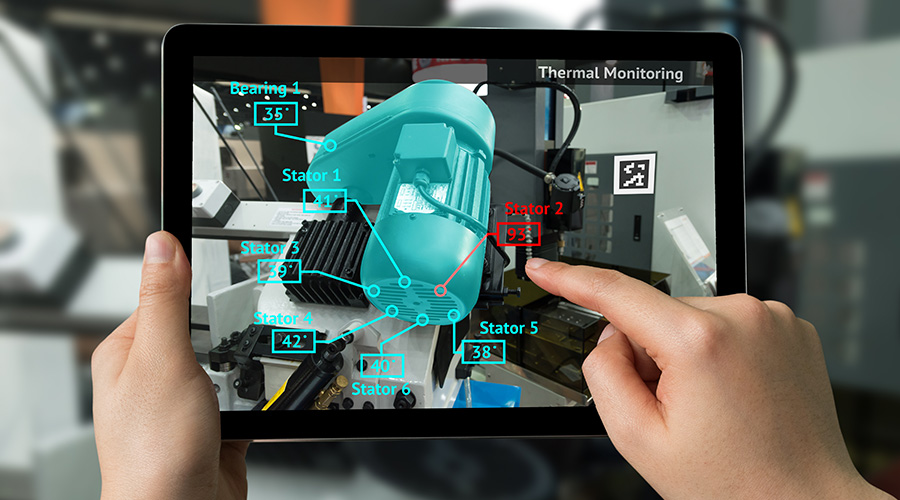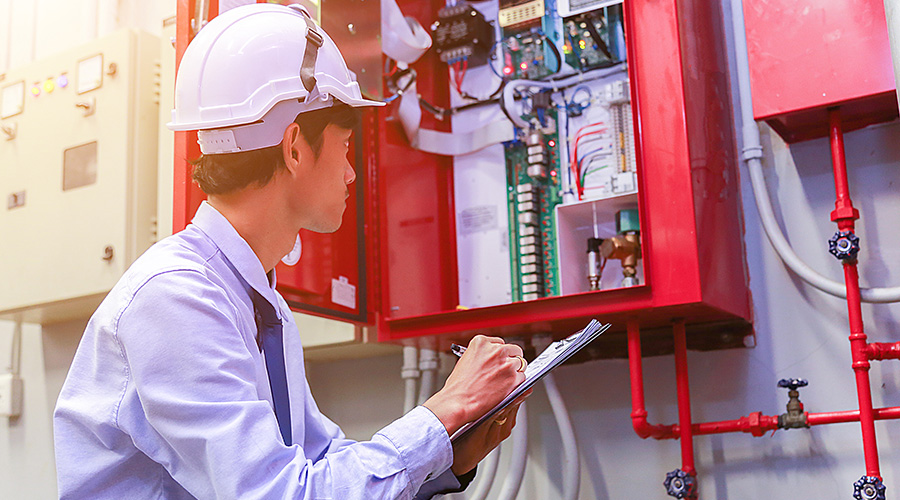Fire Protection Systems an Important but Overlooked Component
Facility executives must stress the importance of fire systems from the design of buildings.
One of the most frequent mistakes DeMarco encounters is designing systems solely to meet minimum code requirements without considering long-term use.
He says that fire codes provide a baseline but don’t address a facility’s unique needs. Systems that overlook production flow, occupancy patterns or equipment layout can trigger unintended downtime when alarms sound or sprinklers discharge.
There are two approaches to fire protection system design: prescriptive design, which strictly follows code line by line, and performance-based design, which tailors solutions to a facility’s specific workflows, equipment and building layout. The approach that can offer the best protection can be performance-based design.
“Some facilities house mission-critical systems or highly valuable equipment. In those cases, the priority is detecting and extinguishing a fire quickly to minimize downtime and protect core operations,” Tamburello says. “A risk assessment helps identify those needs and develop solutions that go beyond the minimum code requirements.”
Another common oversight is not involving all stakeholders early. Collaboration among AHJs, facility managers, department heads, IT, architects and sometimes the local fire department ensures that systems are resilient, code-compliant and easy to maintain.
Early engagement also allows teams to anticipate “what if” scenarios, such as high-occupancy events, equipment failures or emergency evacuations, so the system functions reliably in real-world conditions.
Changes in occupancy or building use are another frequent source of risk.
Certificates of occupancy are based on a facility’s designated purpose, be it restaurant, office, warehouse or assembly space. Any change in use requires updating the fire protection system to remain compliant.
“A lot of owners don’t realize this. They’ll take half a restaurant and turn it into storage or light manufacturing without permits or updates,” DeMarco says. “But by law, when occupancy use changes, you must bring the building up to current codes.”
Failure to do so can have tragic consequences, as illustrated by the Ghost Ship warehouse fire in Oakland, California. Because of an unreported usage change, fire protection systems weren’t updated, and 36 people died in the warehouse fire.
Other operational mistakes that can also compromise safety include:
- Untrained staff responding to alarms or not safely shutting down systems.
- Poor maintenance, leaving valves, detection devices or sprinklers undocumented or inaccessible.
- Misuse of equipment, such as hanging items from sprinkler heads triggering accidental flooding.
Tech solutions
Sometimes, simple is best when it comes to fire safety. Experts suggest that more complex fire protection systems may lead to reliability issues.
Most fire protection plans address building codes with active and passive fire protection systems. Active systems respond to fire and include technologies like smoke detectors, sprinklers, alarms and extinguishers. Passive systems act without intervention to contain or slow the spread of fire and include fire-rated walls and doors.
Tamburello stresses that traditional fire safety, including sprinklers, smoke detectors, fire alarms, and water-based suppression, will remain the primary fire protection systems implemented in most buildings for decades.
Though newer technologies or specialized systems may be used, Tamburello says, “Advanced technologies are enhancing, not replacing, these core systems. Smart sensors, AI-driven systems and automated self-testing devices can improve reliability and reduce maintenance costs.”
Advanced technology can detect impairments faster than traditional quarterly or annual inspections, potentially reducing the need for frequent in-person checks. AI and integrated building systems can also enhance existing infrastructure, such as using security cameras to detect smoke or heat anomalies and feeding this information into central fire alarm monitoring systems.
Wireless fire alarm systems are becoming more robust and widely accepted as well. Modern wireless systems can support more devices, integrate with access points and report alarms reliably, making them especially useful for renovations, historic buildings or facilities where running new wiring is difficult. Blicher expects wireless systems to become increasingly mainstream as technology and battery life improve.
Suppression systems are also evolving. Hybrid systems, which combine water mist and inert gas, have been around for a while but did not get an NFPA standard (NFPA 770) until 2021. Now, they offer new options for data and telecommunications centers and other sensitive environments.
“These systems can extinguish fires effectively without harming equipment, leaving no residue, and avoiding the need for room pressurization required by traditional inert gas systems,” Blicher says. They offer an alternative when traditional sprinklers or clean-agent systems may not be ideal due to cost, operational impact or environmental concerns.
Avoiding problems
There are several ways to avoid problems with system design. The first is to get help from a qualified Fire Protection Engineer who can give an objective assessment that helps building owners, facility managers and landlords choose the most appropriate technologies based on the building’s design and how it’s used.
The second is to make sure the design engineers and facility managers are involved in installation through commissioning, which includes testing every component in the system to ensure it works as intended. Once the system is commissioned and approved by the fire marshal, the facility manager’s responsibilities should shift to ongoing maintenance, which includes annual and semiannual inspections, testing and upkeep as mandated by the NFPA.
Next, facility executives must make sure their qualified personnel perform all code-mandated maintenance.
“You need a company under contract to do routine inspections at the required frequency,” Tramburello says. “They will provide a report identifying any deficiencies, but it’s up to the building owner and facility manager to make sure they are corrected.”
Facility maintenance staff should be familiar with basic system functions, including how to respond to alarms, interpret alerts and avoid actions that compromise protection, such as blocking exits or tampering with devices. When personnel are unfamiliar with operations, mistakes can occur. Valves may be closed, protection zones disabled, or devices left untested, leaving the entire building vulnerable.
“If you don’t have the right skill sets overseeing the system, mistakes happen, and entire buildings can be left unprotected,” warns DeMarco.
Finally, detailed records must be kept to prove all components are functioning correctly. When there are issues, they must address them promptly.
“The goal is not just to install a system,” DeMarco concludes, “but to build a resilient, reliable framework that keeps people safe, minimizes disruption and adapts as the building and its use evolve.”
Ronnie Wendt is a freelance writer based in Minocqua, Wisconsin.
Related Topics:













